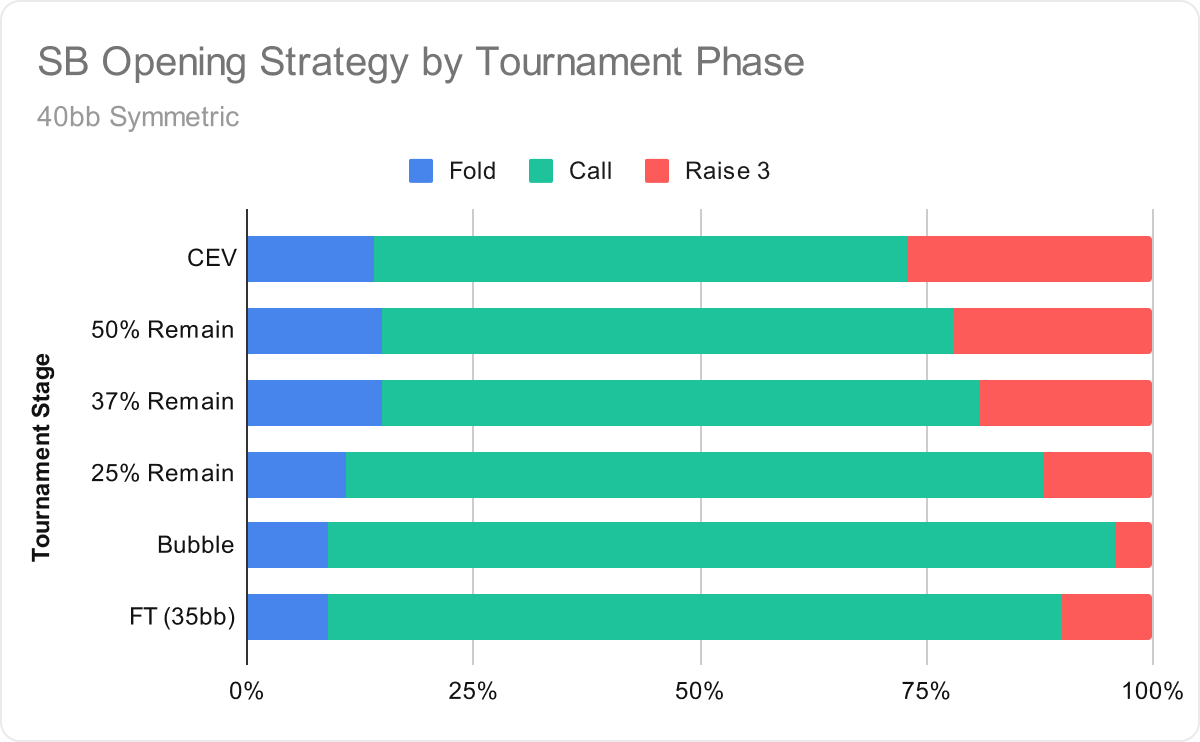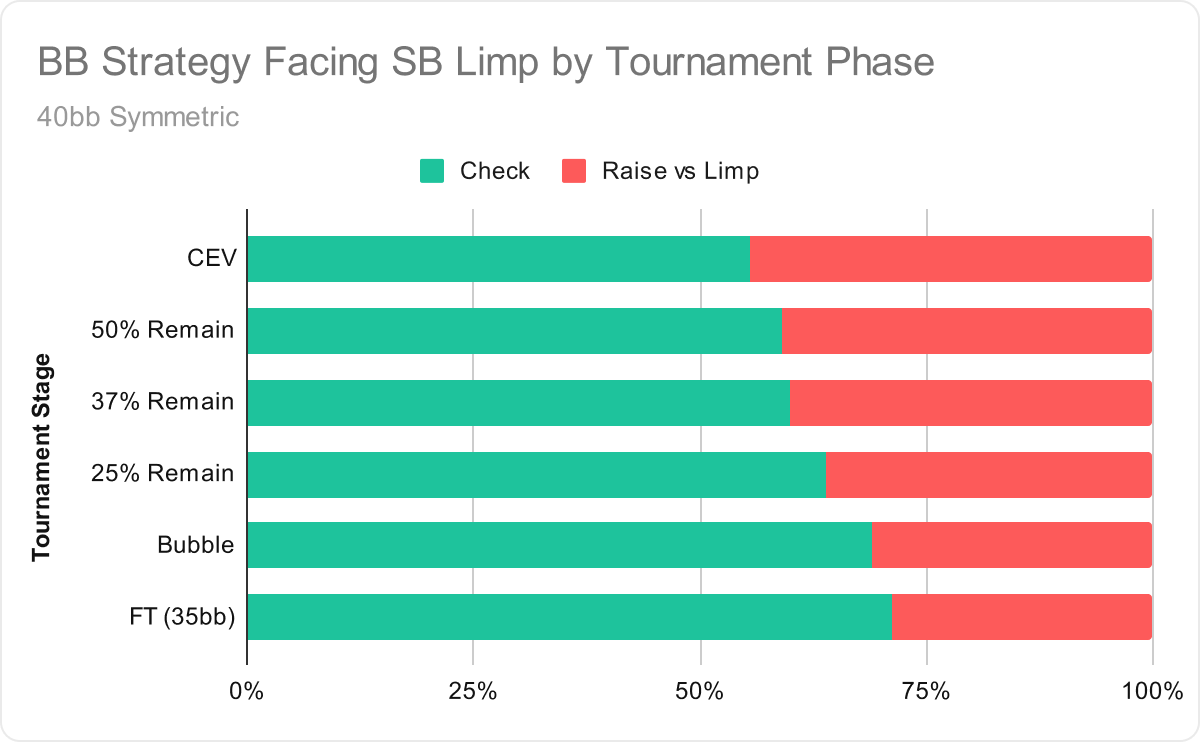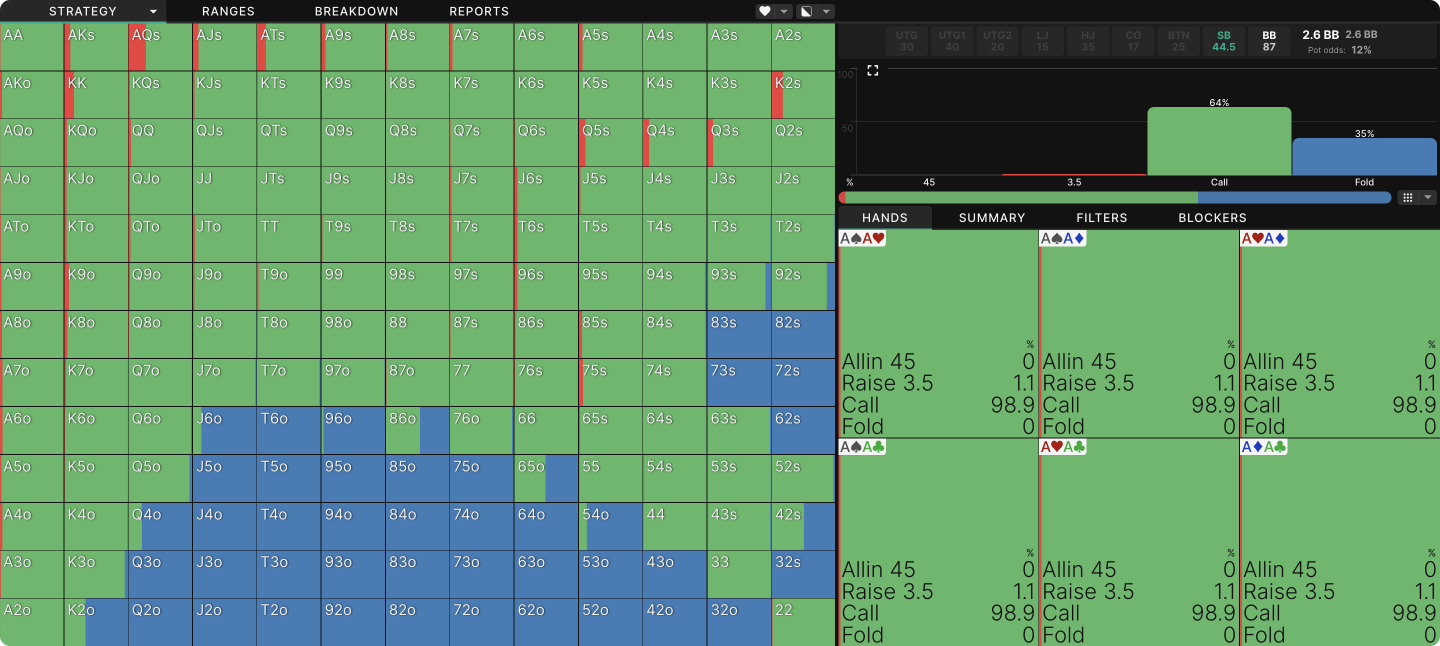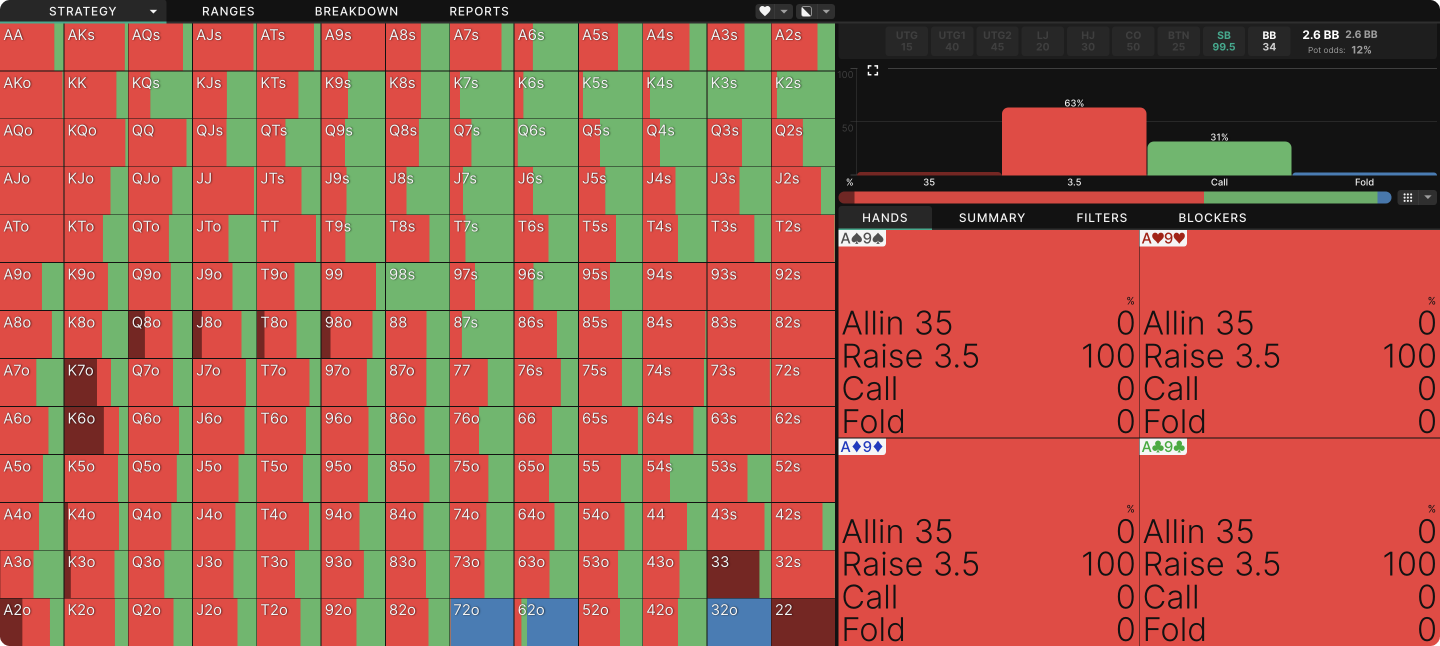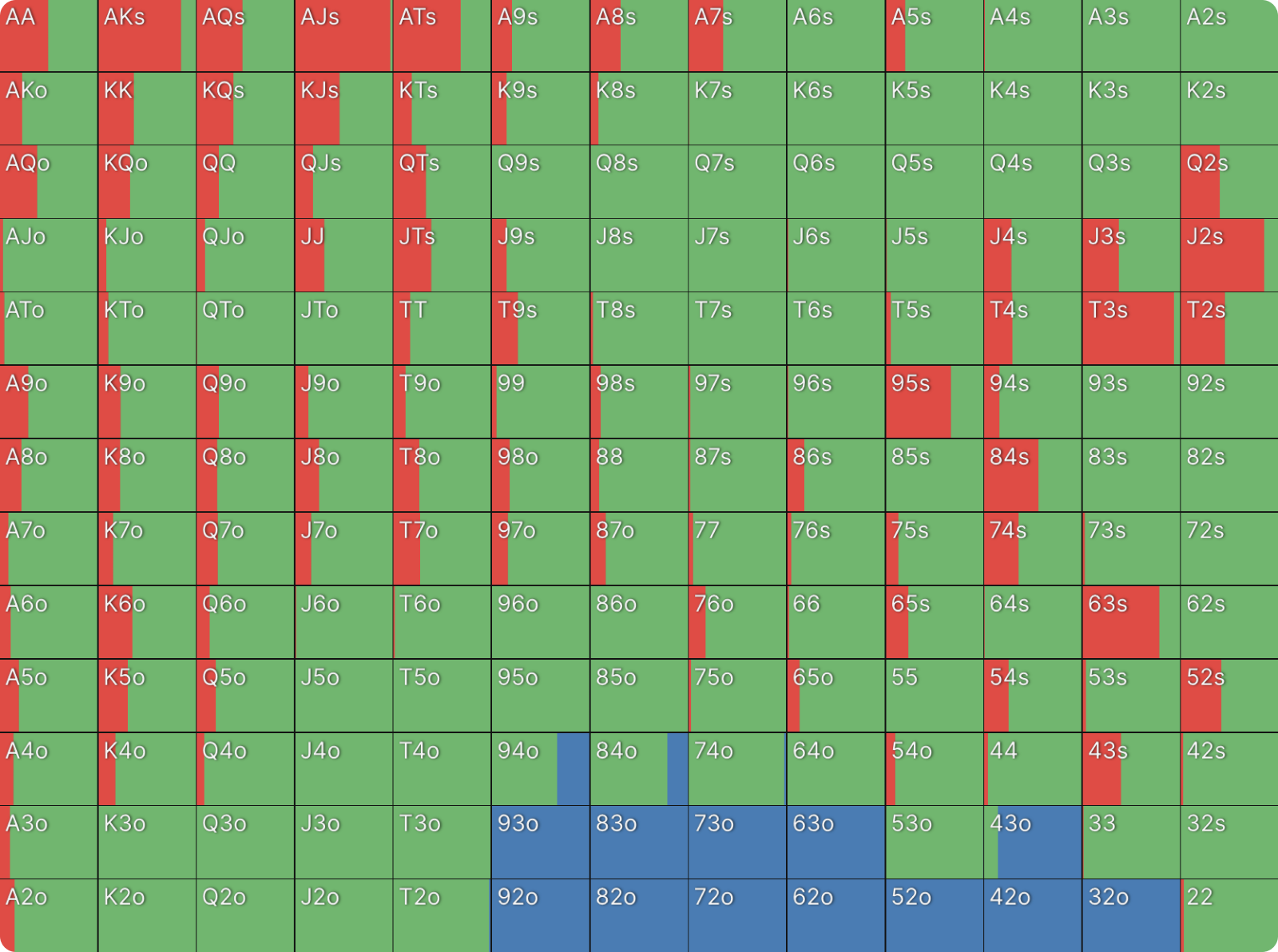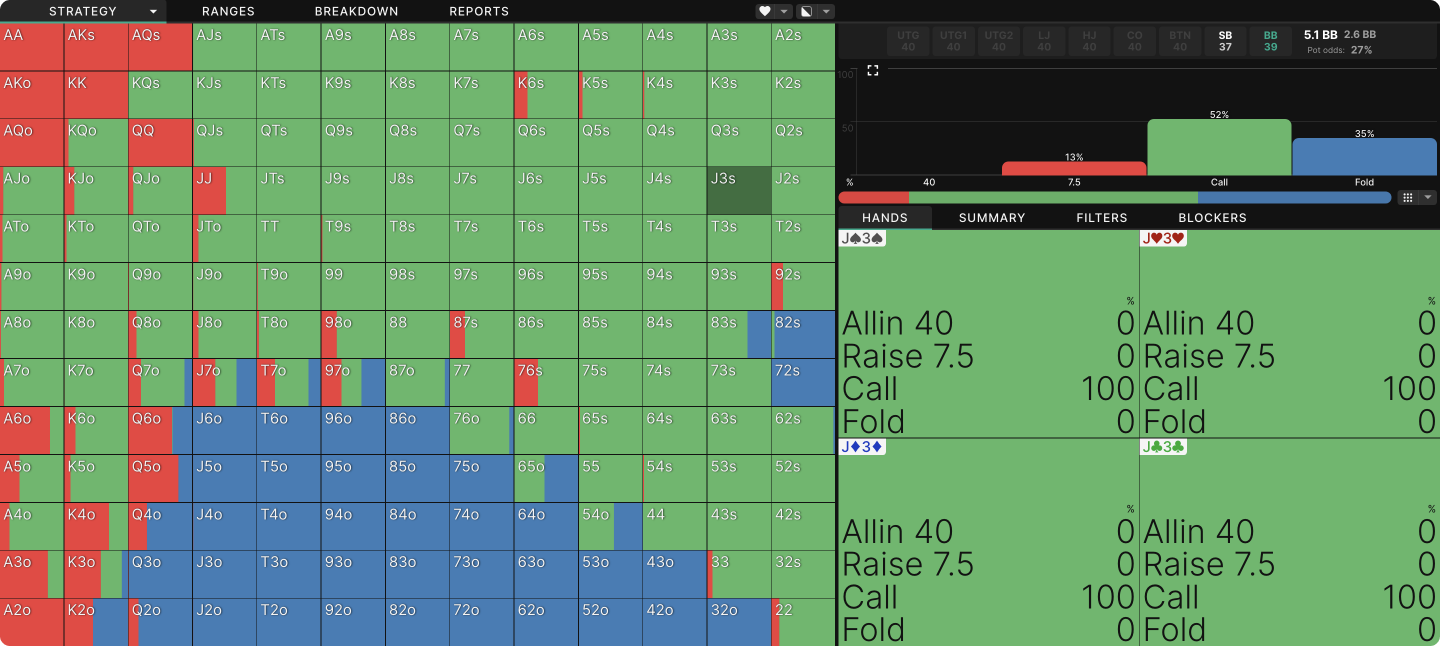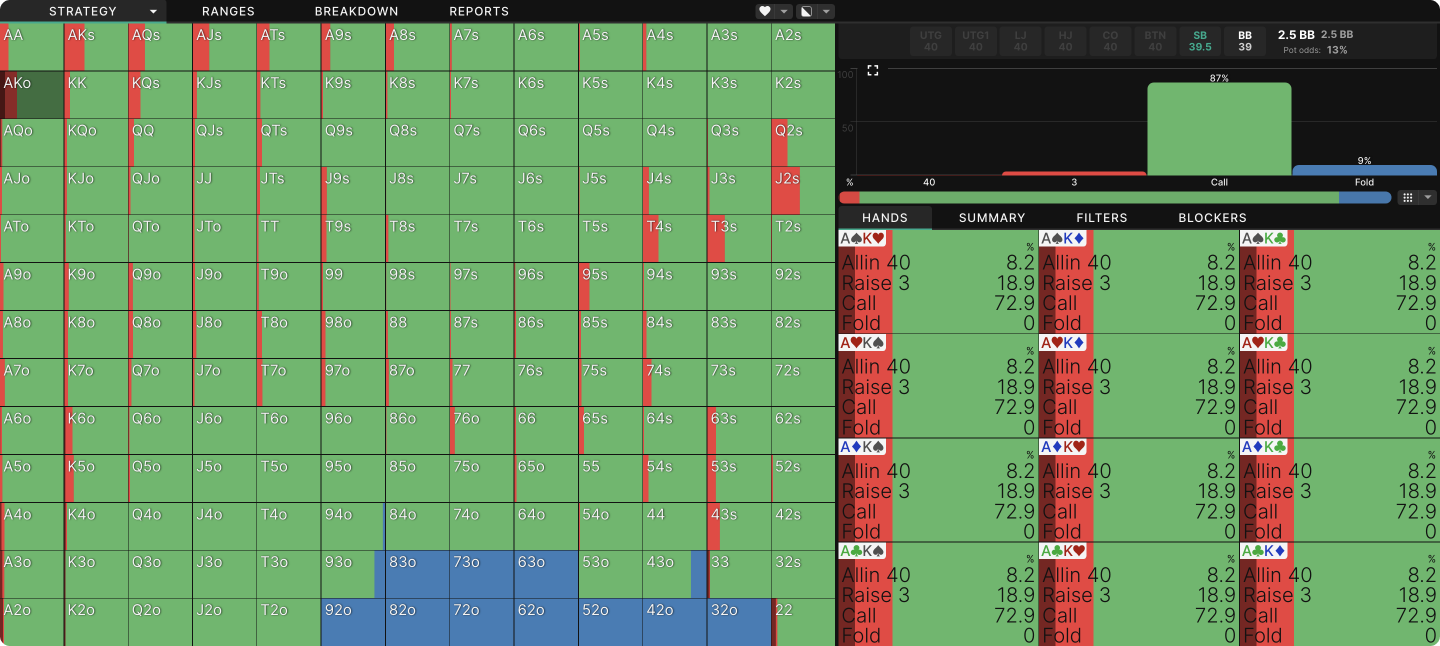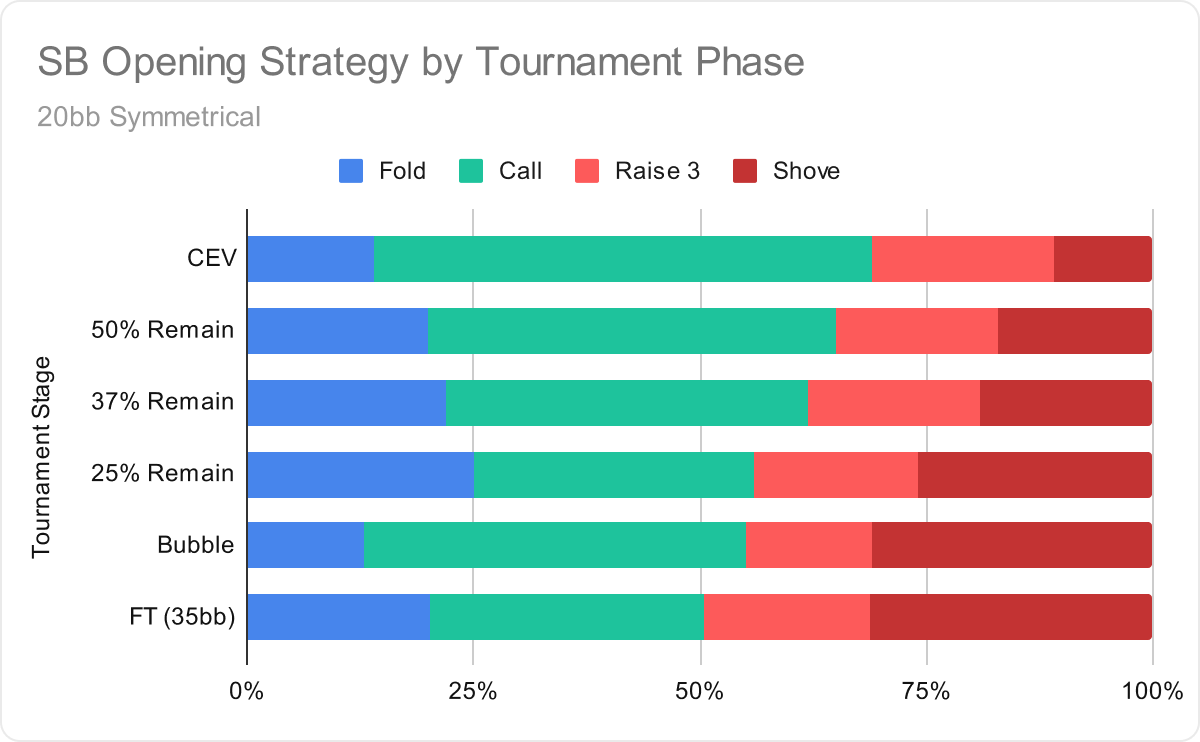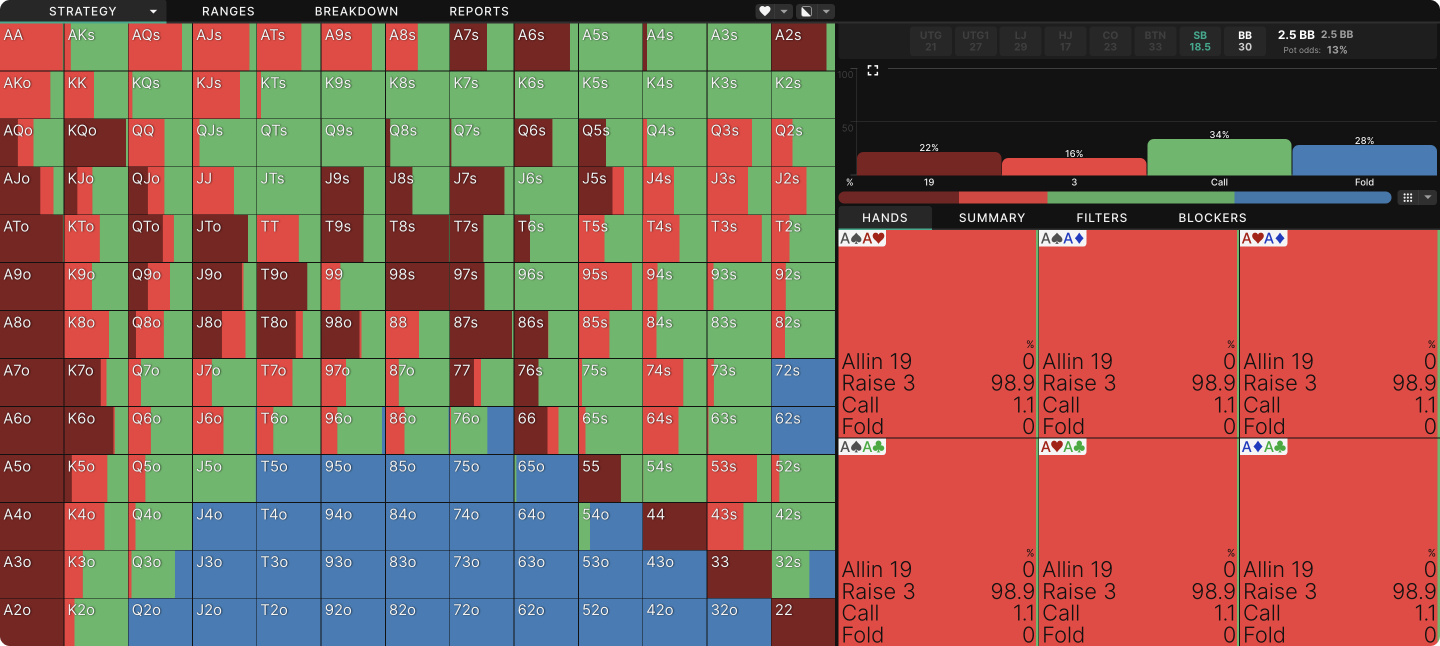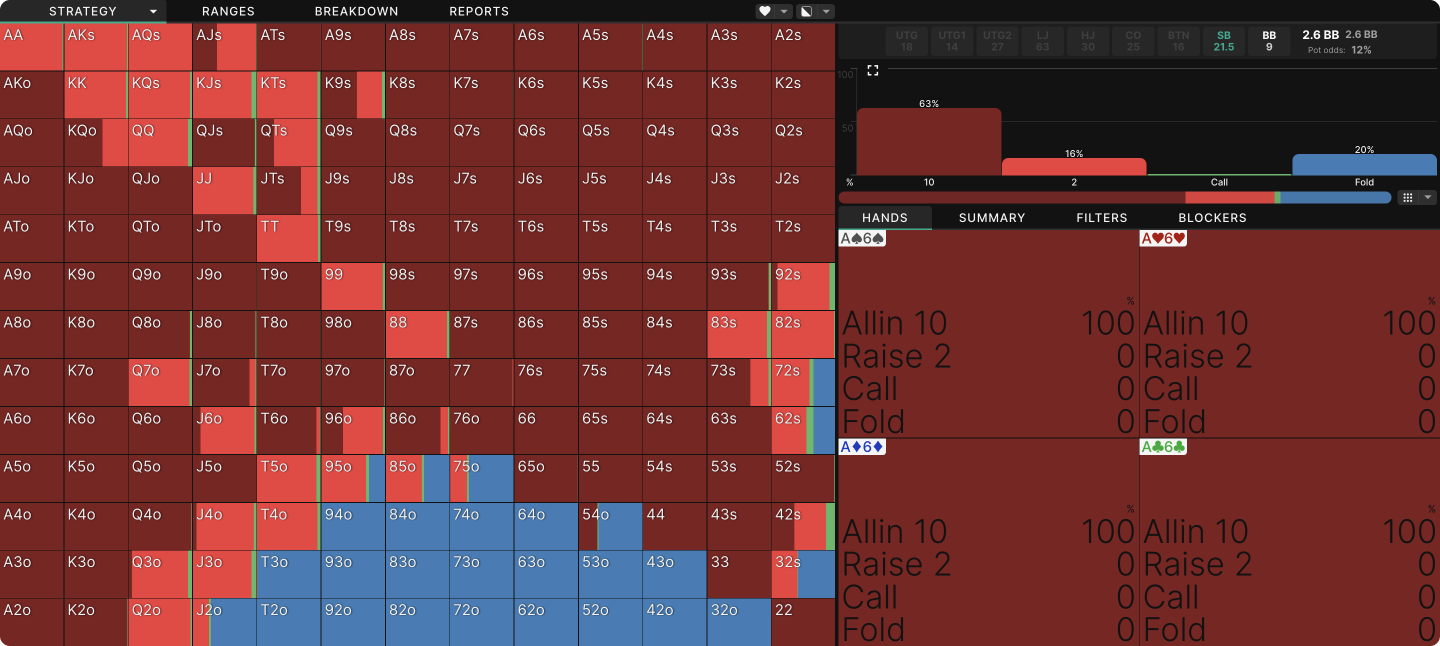ICM and Blind Battles:
The Small Blind
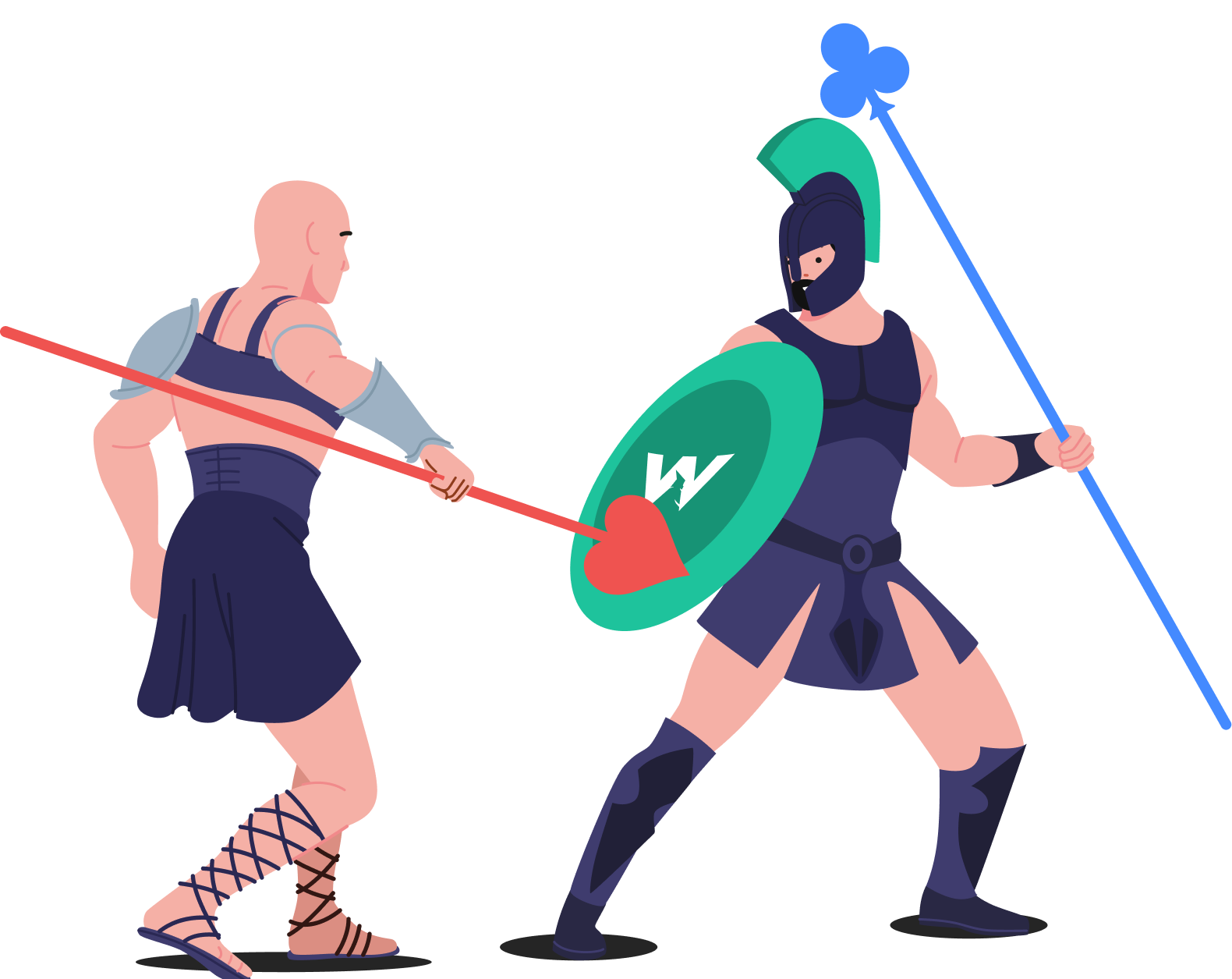
ICM incentivizes more conservative play, which means that at stages of the tournament where risk premiums are highest, action is more likely to fold around to the blindsBlind bet
To bet pre-flop without looking at your cards, or to bet postflop before the next street has been dealt. Typically, not allowed in online poker.. Consequently, it is especially important to learn how to navigate blind versus blind confrontations under ICM pressure. Even when one player covers the other, both are incentivized to realize their equity without provoking a big confrontation. There are two ways to do this:
- LimpLimp
To call the big blind preflop, before anyone has made a raise. or check to keep the pot small. - Move all-in, forcing your opponent to fold or risk losing a big pot.
The higher the risk premiums, the stronger the incentives for both players to pursue one of these two strategies. The all-in option becomes viable only with relatively shallow stacks. The following chart shows the SB’s strategy when the action folds to them at various stages of the tournament as well as the BB’s response to a limp. In this simulation, all players have precisely 40bb, so neither covers the other.
The most dramatic trend here is that, as the risk premium increases, the SB does less open raising, arriving at a nearly pure limp-or-fold strategy when under the extreme pressure of the bubble or a nine-handed final table.
Facing the limp, the BB’s raising frequency mostly decreases as risk premium mounts, but the change is not nearly so dramatic, and they retain a robust raising strategy at all stages of the tournament. Growing the pot is bad for both players, but it is especially bad for the out of position SB, who will have more trouble realizing equity and controlling the pot size after the flop. Even after facing a raise from such a wide range, SB responds primarily by calling rather than raising.
Growing the pot is bad for both players, but it is especially bad for the out of position SB.
An extreme example of this effect is on display in this final table scenario, where the SB is second in chips and the BB first by a wide margin.
Only if we give the SB a massively covering stack at the final table are they incentivized to raise aggressively.
Which Hands Does the SB Raise?
Despite increased incentives for limping, raising remains an integral part of the SB’s strategy under all but the most intense ICM scenarios, so it’s worth learning a few heuristics for which hands to raise. Here’s the strategy with 40bb stacks and 25% of the field remaining.
SB’s raising range is narrow and polar, with the value region consisting of only the biggest pairs, suited Aces, and suited Broadways. Only the strongest offsuit BroadwayBroadway
A ten through ace straight. “Broadway cards” can also be used to describe any 10, J, Q, K, or A card. hands raise, with smaller offsuit broadways and medium suited hands limping heavily to preserve their equity and avoid playing a big pot. The bluff portions of the raising range are a diverse mix of lower suited hands and higher offsuit hands.
It may seem arbitrary at first, but there’s a method to the madness: the BB responds to this raise with a robust calling range and some polarized three-betting. This mix of calls and three-bets prevents the SB from following a simple heuristic of raising exclusively small suited hands or higher offsuit hands. When the BB calls, SB prefers to have the suited hands, as they realize equity better from out of position. When the BB raises, however, SB regrets having suited hands, as they give up more EV by folding.
The resulting equilibrium is that the SB bluffs with a mix of offsuit hands that do reasonably well when called but don’t mind folding to three-bets and suited hands that have the least to lose by folding to three-bets. This is why the SB treats T3s as a better opening candidate than T6s: the latter performs slightly better when called but also gives up more when it folds to a three-bet.
The BB’s mix of calls and three-bets prevents the SB from following a simple heuristic.
The same patterns persist as the bubble approaches, but they are harder to discern as the SB raises so rarely.
Shallower Stacks
With shallower effective stacks, the SB has a new tool for avoiding big confrontations: open shoving. It’s a bit counter-intuitive, but this is actually a low-risk play because the BB’s own risk premium incentivizes them to fold quite often, even with hands that are well ahead of the SB’s shoving range. As the risk premium increases, the SB’s strategy shifts away from calls and smaller open raises and toward shoves and folds. The following chart shows how SB’s strategy changes as the tournament progresses, 20bb deep.
This pattern persists even when the SB is covered. In this final table scenario, the BB has 30bb to SB’s 19, but SB shoves aggressively nevertheless, as calling remains a significant risk for the BB.
The composition of these ranges also matches that of the symmetric stack simulations: the SB shoves a blocker-heavy range of medium-strength hands too strong to raise-fold but not so strong they want to induce action.
Their 3bb raising range is more polar, with big pairs and suited Aces balanced by small suited hands and larger off-suit hands. SB’s limping range is also somewhat polar, with stronger hands limping to call or raise and weaker ones limping to fold. Note that AA is a poor candidate for limping as a trap because it blocks so much of the BB’s raising range.
When the SB covers the BB, they mostly shove or fold, with just a narrow, polar raising range. They fold much more often than when covering with deeper stacks, as the BB will find more hands worth risking their tournament life when shallow.
Conclusion
By treating these as the default plays and using the heuristics in this article to determine whether to make an exception for a particular hand, you can turn ICM pressure into a tool for taking chips from your opponent rather than a danger to yourself.
Blind vs. blind confrontations are among the trickiest spots in hold ‘em, as they incentivize both players to contest the pot with wide ranges. This conflicts directly with the pressures of ICM, which incentivize players to avoid big confrontations. As the SB, your primary tools for navigating these spots are open limping with deeper stacks and open shoving with shallower stacks.
Author
Andrew Brokos
Andrew Brokos has been a professional poker player, coach, and author for over 15 years. He co-hosts the Thinking Poker Podcast and is the author of the Play Optimal Poker books, among others.

